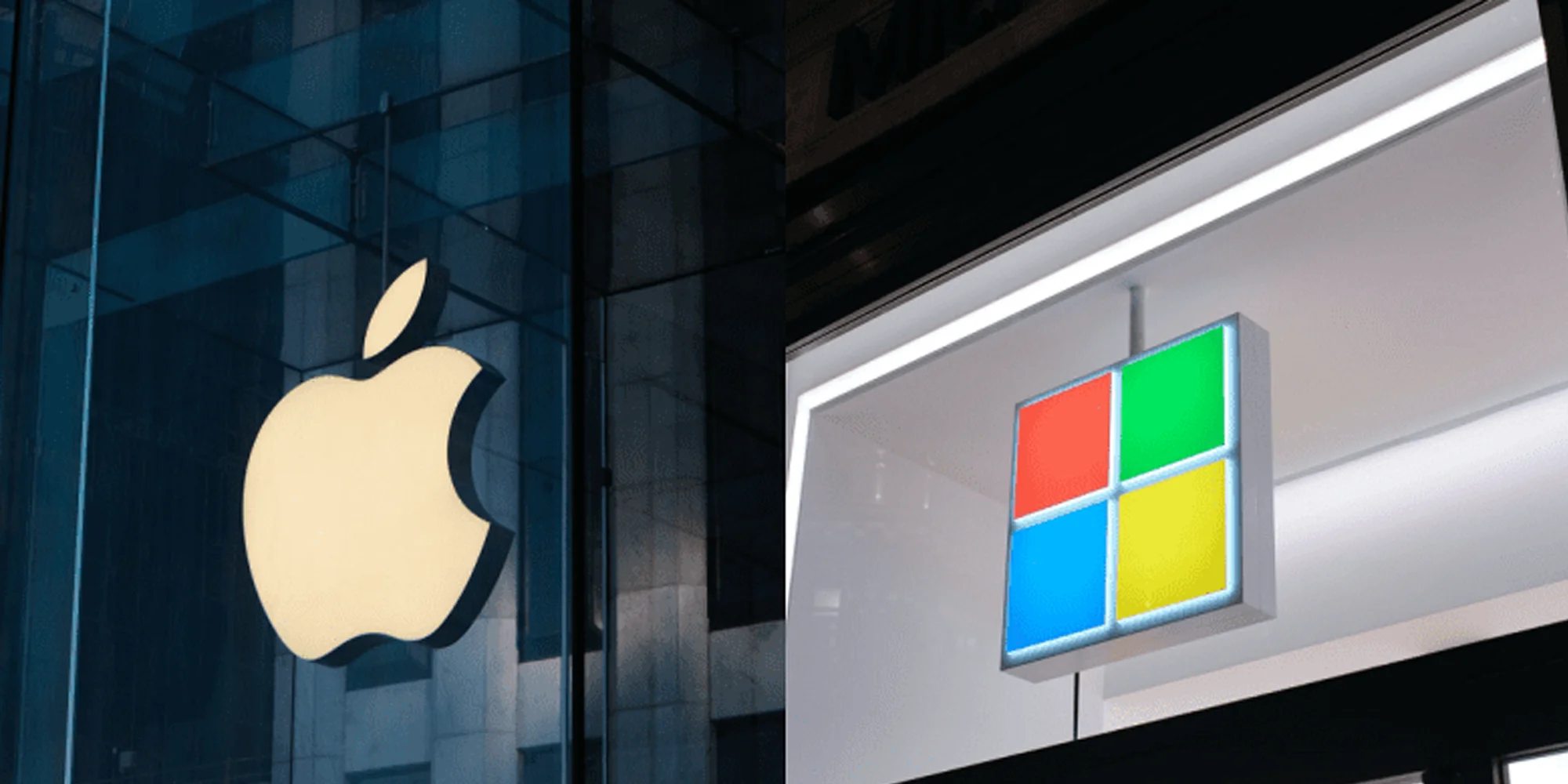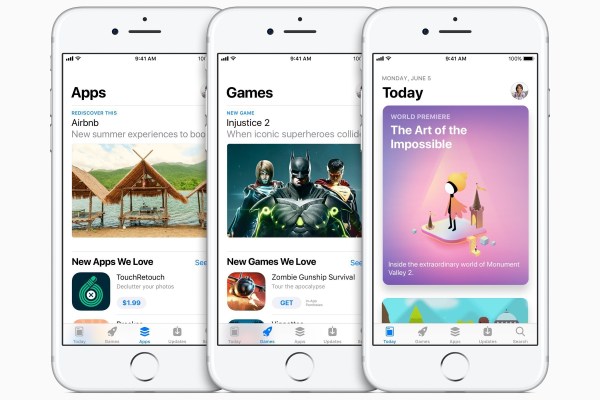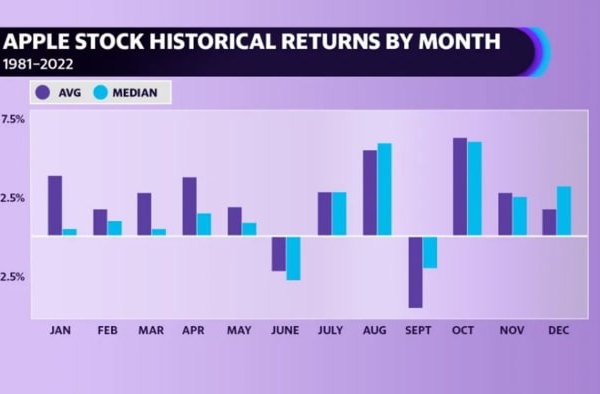Apple Microsoft Rivalry: An Ad Battle for Market Share

The Apple Microsoft rivalry has been an enduring saga in the tech world, capturing the attention of both consumers and industry insiders alike. This competition, often epitomized by the stark contrast between the sleek aesthetics of Macs and the practicality of PCs, emphasizes the ongoing debate of Apple vs Microsoft. At the heart of this feud was Microsoft’s infamous “Laptop Hunter” ad, which critiqued Apple for what many called an “Apple tax” — essentially the premium price tag attached to its products. While marketing campaigns from both companies have sought to sway public opinion, the core of this tech giant competition lies in their contrasting values: design versus affordability. As this rivalry unfolded, it became apparent that the battle for market share was not just about sales, but about the brand identities that consumers so passionately aligned with.
In the realm of technology and innovation, the clash between these two behemoths, often referred to as the battle of PCs versus Macs, has sparked countless discussions and debates. The contention arises as fans of each brand passionately defend their preferences, fueled by iconic campaigns such as Apple’s “I’m a Mac” series and Microsoft’s response through the “Laptop Hunter” advertising initiative. This competition is underscored by the phenomenon known as the “Apple tax,” which represents the additional cost consumers face when choosing Apple products. Beyond pricing and hardware, this rivalry encapsulates the essence of brand loyalty and consumer behavior in the rapidly evolving tech landscape. As these two companies continue to adapt and redefine their strategies, the narrative remains compelling for anyone invested in the future of technology.
Understanding the Apple vs Microsoft Rivalry
The rivalry between Apple and Microsoft has been one of the most notable in the tech industry, characterized by fierce competition and innovative advancements. At the heart of this rivalry is the clash of philosophical differences in how each company approaches technology. Apple has consistently focused on delivering premium products with sleek designs and user-friendly interfaces, while Microsoft has traditionally aimed to provide a diverse range of affordable solutions for consumers and businesses alike. This dichotomy has led to a passionate fan base surrounding both brands, further fueling their competition.
Through the years, this rivalry has played a vital role in shaping the technology landscape. The launch of products like the iPod and iPhone gave Apple a significant edge in market visibility and consumer loyalty, challenging Microsoft’s previous dominance in the software realm. However, Microsoft has not remained stagnant; the company’s continuous updates to Windows and initiatives like the Laptop Hunter ad campaign indicate its commitment to remaining a major player in the industry. With Apple’s surge in popularity, the battle between these tech giants has captured the attention of both consumers and media outlets alike.
The Impact of the Laptop Hunter Ad Campaign
Microsoft’s Laptop Hunter ad campaign marked a strategic attempt to counteract Apple’s image and appeal in the consumer electronics market. By emphasizing the affordability of PCs over Apple’s higher-priced offerings, Microsoft sought to highlight what some referred to as the ‘Apple tax’—the additional cost consumers incur when choosing a Mac over its more budget-friendly Windows counterparts. This campaign specifically targeted the price-conscious demographic who desired quality without the premium price tag, effectively showcasing Microsoft’s commitment to meeting diverse customer needs.
Interestingly, the Laptop Hunter ads positioned the PC as not just a viable alternative but as a more economically sensible option, without directly critiquing the performance or design of Apple’s systems. This tactic was intentional; Microsoft aimed to shift the narrative from aesthetic appeal to tangible financial advantages. Such advertising strategies exemplify the broader themes of the Apple vs Microsoft rivalry, where perceptions and branding play just as significant a role as the technology itself.
Retaliation to Apple’s Advertising Tactics
In response to Apple’s engaging and impactful ad campaign titled ‘I’m a Mac,’ Microsoft commissioned a report to address the increasing perception problems that were damaging the image of PCs. The report’s comparisons of hardware and pricing not only shed light on the disparities between Apple and Microsoft products but also sought to assure consumers that Macs were not the only option for high-quality devices. This retaliatory move reflected an urgent need for Microsoft to reestablish credibility in the market amid Apple’s rising prominence.
Apple’s advertisements framed the Mac as the cooler alternative, benefiting from a slew of successful product launches in the late 2000s. This created a challenging environment for Microsoft as they grappled with a growing sentiment of brand loyalty towards Apple. In an era dominated by Apple’s scintillating marketing, regardless of the technological merits of PCs, Microsoft needed to demonstrate that they could also offer high-value products. Thus, their strategies focused not only on challenging Apple’s pricing but also on redefining consumer expectations surrounding functionality and performance.
The Evolution of the Tech Giants’ Competition
As we move through the 21st century, the competitive narrative between Apple and Microsoft has seen significant evolution. What once was a fierce rivalry has somewhat mellowed into an era of collaboration as both companies realize the value in working together. For instance, the introduction of Apple Music and Apple TV apps on Windows platforms reflects a new dynamic where cooperation can coexist with competition. This shift highlights a broader trend in technology where ecosystem compatibility becomes critical for user satisfaction.
This evolving relationship demonstrates that both tech giants can coexist while addressing user needs across multiple platforms. Users no longer feel they must choose sides exclusively; they can enjoy products from both companies. The ongoing integration of services has allowed both Apple and Microsoft to remain relevant and adapt to the changing tides of consumer tech usage. Therefore, while competition persists, the symbiotic relationship exemplifies the growth and maturity of the industry as a whole.
The Significance of Product Design in the Apple-Microsoft Rivalry
Product design has historically played a crucial role in the rivalry between Apple and Microsoft, shaping consumers’ perceptions and purchase decisions in significant ways. Apple has continuously positioned itself as a design leader, producing aesthetically pleasing products that attract consumers looking for functionality combined with elegance. This dedication to product design sets Apple apart, allowing it to cultivate a strong, passionate user base that values not just quality but also the overall experience of using Apple products.
On the other hand, Microsoft’s approach to product design often revolves around practicality and versatility. While their products may not have the same visual appeal as Apple’s, Microsoft aims to provide reliable and functional solutions for a broader audience. This practical perspective allows Microsoft to maintain a strong market presence, particularly among business and education sectors. Through these different design philosophies, the rivalry continues to evolve, compelling each company to innovate and refine their product offerings.
Consumer Perceptions of Value: PC vs Mac
Consumer perceptions of value significantly affect the ongoing PC vs Mac debate, especially when contextualizing the Apple Microsoft rivalry. Many consumers see Macs as high-end products that deliver premium experiences, often associating their cost with superior quality and performance. This impression aligns with Apple’s branding as a luxury tech manufacturer, elevating its products to a status symbol. However, some consumers argue that the higher price tag reflects the so-called ‘Apple tax,’ leading them to favor more cost-effective Windows alternatives.
Conversely, Windows PCs often appeal to budget-conscious consumers who prioritize functionality without the additional expense associated with Apple products. This perspective neatly encapsulates the divergence in consumer priorities between the two brands. Emerging from the Microsoft ads showcasing affordable alternatives, many consumers recognize that excellent performance and reliability can come at a lower cost, challenging Apple’s supremacy in the premium sector and illustrating the diverse needs of today’s tech users.
The Role of Innovation in the Apple Microsoft Competition
Innovation is a defining factor in the ongoing competition between Apple and Microsoft, influencing the strategies and technologies each company employs to attract users. Apple has consistently introduced groundbreaking products and features that redefine consumer expectations in the tech industry. From the introduction of touch interfaces to the seamless integration of hardware and software across devices, Apple’s innovative spirit reflects its commitment to user experience. This proactive approach has cemented successive product releases as not just updates, but transformative advancements in technology.
Microsoft, too, has responded to the challenge of innovation with advancements in software and cloud technologies, particularly emphasizing productivity and collaboration through tools like Microsoft Office and Azure. Accordingly, Microsoft’s ongoing improvements to its operating systems and applications demonstrate an equally strong commitment to innovation. The landscape of tech competition in which both giants operate requires an agility that drives continuous development, fostering an environment where consumers remain engaged and excited about future offerings.
Collaborative Ventures Between Apple and Microsoft
Despite the traditional rivalry, Apple and Microsoft have begun to engage in strategic collaborations that serve the interests of their user bases. The expansion of services like Apple Music on Windows platforms exemplifies a shift towards interoperability that benefits consumers who use products from both companies. This partnership model fosters an understanding that collaboration can complement competition, allowing both firms to leverage each other’s strengths and improve user experiences across ecosystems.
As a result, users find themselves enjoying an increasingly interconnected digital landscape where services and products from both Apple and Microsoft are compatible. This change not only enhances user engagement but also reduces barriers that historically limited choices for consumers. Thus, the Apple Microsoft rivalry, once characterized by exclusivity and opposition, has transformed into a more cooperative approach that recognizes how aligned interests can lead to substantial benefits for their respective ecosystems.
Looking Ahead: The Future of Tech Giant Competition
As consumer preferences continue to evolve, the future of the Apple Microsoft rivalry holds great potential for both competition and collaboration. To stay relevant, both companies will need to adapt to emerging technologies such as artificial intelligence, augmented reality, and machine learning. These advancements promise to create new opportunities for innovation and redefine user experiences, allowing each tech giant to explore new avenues for growth.
Furthermore, as issues of sustainability and ethical manufacturing become increasingly vital in consumer decision-making, both Apple and Microsoft will need to innovate in ways that address these concerns effectively. The rivalry may begin to shift not just based on technology but also on corporate responsibility and brand values. Thus, as we look ahead, the dynamics of competition between Apple and Microsoft will likely continue to change, reflecting both market demands and the evolving landscape of consumer technology.
Frequently Asked Questions
What sparked the Apple vs Microsoft rivalry in advertising?
The rivalry intensified due to Microsoft’s ‘Laptop Hunter’ ad campaign, which criticized Apple for its higher-priced laptops, highlighting the ‘Apple tax’ that consumers paid for Macs compared to cheaper Windows PCs.
How did Apple respond to Microsoft’s ‘Laptop Hunter’ campaign?
Apple retaliated against the ‘Laptop Hunter’ ads by emphasizing its unique design and advanced software capabilities, with Mac PR director Bill Evans stating that despite price differences, the Mac remains a cool and desirable option.
What was the purpose of Microsoft’s ‘Laptop Hunter’ ads in the Apple Microsoft rivalry?
The ‘Laptop Hunter’ ads aimed to attract budget-conscious consumers by showcasing the affordability of Windows PCs, contrasting them against Apple’s more expensive offerings, thereby questioning the value of the ‘Apple tax’.
How did the tech giant competition between Apple and Microsoft change over time?
Initially dominated by Microsoft, the competition shifted dramatically in the 2000s as Apple gained popularity with the iPod and iPhone, eventually surpassing Microsoft in market value in 2010.
What are some common arguments in the PC vs Mac debate?
The PC vs Mac debate often revolves around pricing, with critics highlighting the ‘Apple tax’ on Macs while fans defend Apple’s superior design and integrated ecosystem, including compatibility with various software.
In what ways do Apple and Microsoft collaborate today despite their rivalry?
Despite their historical rivalry, Apple and Microsoft now cooperate, with Apple services like Apple Music and Apple TV available on Windows, allowing integration between platforms and enhancing user experiences.
What impact did the ‘I’m a Mac’ campaign have on the Apple Microsoft rivalry?
The ‘I’m a Mac’ campaign effectively portrayed Macs as more trendy and user-friendly, negatively impacting Microsoft’s image and prompting a response from Microsoft to reclaim its position in the tech market.
| Key Points |
|---|
| In 2009, Apple retaliated against Microsoft after the ‘Laptop Hunter’ ad campaign, which criticized Apple for its high prices. |
| Microsoft’s ads targeted the affordability of laptops and highlighted the so-called ‘Apple tax’ related to its products. |
| Microsoft sought to improve the perception of PCs in response to Apple’s influential ‘I’m a Mac’ advertisements. |
| Apple’s success in the 2000s, fueled by products like the iPod and iPhone, led to significant gains in market value over Microsoft. |
| By May 2010, Apple surpassed Microsoft in market value, and continued to gain momentum in subsequent years, topping ExxonMobil in 2011. |
| Currently, the rivalry has softened, with cooperation between both companies observable through shared software and services. |
Summary
The Apple Microsoft rivalry has been a significant aspect of the tech industry for over a decade, marked by aggressive marketing tactics and changing market dynamics. This rivalry transformed as Apple, once a minor player, gained monumental popularity due to its innovative products, eventually surpassing Microsoft in market value. While once fiercely competitive, both companies now find ways to cooperate, reflecting the shifting landscape of technology where collaboration can thrive alongside competition.
You may also like

iOS App Store Success: A Milestone in Digital Distribution


First Email from Space: The Macintosh Portable’s Legacy
Archives
Calendar
| M | T | W | T | F | S | S |
|---|---|---|---|---|---|---|
| 1 | 2 | 3 | 4 | |||
| 5 | 6 | 7 | 8 | 9 | 10 | 11 |
| 12 | 13 | 14 | 15 | 16 | 17 | 18 |
| 19 | 20 | 21 | 22 | 23 | 24 | 25 |
| 26 | 27 | 28 | 29 | 30 | 31 | |